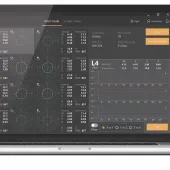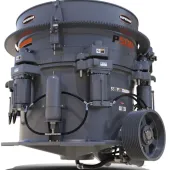Understanding your undercarriage
Finning undercarriage expert Cheryl Griffith explains how to check machines for signs of wear and damage
UNDERCARRIAGE damage can be costly for machine owners and fleet managers at any time of the year. However, during the winter months, with higher levels of rain, wind, and freezing temperatures, there can be even greater pressure on machines, which is why Finning UK & Ireland are urging fleet managers and owner operators to make checking their machines’ undercarriages one of their daily on-site tasks to avoid costly downtime and unplanned machine repairs.
Here, Finning’s resident undercarriage expert and wear parts product manager, Cheryl Griffith, explains how to check for signs of wear and damage to keep an undercarriage in ship-shape condition.
‘The state of a machine’s undercarriage can significantly impact performance. A well cared for undercarriage will help to maximize power, increase safety and stability, and will keep operational repair costs to a minimum over a machine’s lifecycle.
‘A daily walk around a machine is a simple but very effective way for operators to identify any obvious issues or damage to the undercarriage. Not doing this can cost you in terms of any repairs needed, not to mention the costs associated with machine downtime.
‘Regularly checking your undercarriage will also enable you to get a clearer view on what worn looks like. The rate of wear very much depends on the environment the machine is working in. For example, a machine operating in a quarry to excavate granite will put a great deal of strain on the machine, while other materials such as clay or sand can increase the track tension when solidified.
‘Certain operational movements can also increase the level of undercarriage damage. These include, for example, making sharp turns, excessive reversing, or driving at high speeds. In addition, not having the track tension correctly adjusted can also cause damage over time, as will the build-up of dirt and debris causing tracks to stretch and, ultimately, break.
‘Cleaning the tracks thoroughly, particularly in wintery conditions, is also essential to avoid materials drying or freezing on the undercarriage overnight. Scheduling regular maintenance sessions alongside frequent daily spot checks will reduce the risk of damage and more costly repairs down the line, as well as reduced productivity.’
Top tips for keeping an undercarriage in tip-top condition:
Inspect rubber tracks for cracks – which may be a sign of belt fatigue – or damage such as deep cuts or chunks of material missing. Also, check for exposed wire that forms the structure of the track
Ensure rubber track treads protrude higher than the rubber belt and are not separating from the belt
Check any other rubber components for separation of material, cracking, damage, or missing parts
Make sure that no steel track pads are missing, and that the grouser is still protruding well above the pad
Check track pad nuts and bolts to ensure that none are missing or have worked loose
Look at the sharpness of the sprocket tooth – a sharp point indicates high wear
Check roller and idler edges for sharpness, uneven wear, or excessive movement when tracking
Look at the track movement on the frame when the machine is in operation – excessive movement could be a sign of a stretched track or other worn components
Inspect the machine for any wet patches on links which may be a sign of leakage
Ensure that track sag (the amount of tension applied to the track links) is correct. If unsure – check the machine’s maintenance manual for information on how to do this correctly and for relevant specifications
Always ensure that any material is cleaned out of the undercarriage regularly to stop ‘packing’, which can increase wear.










